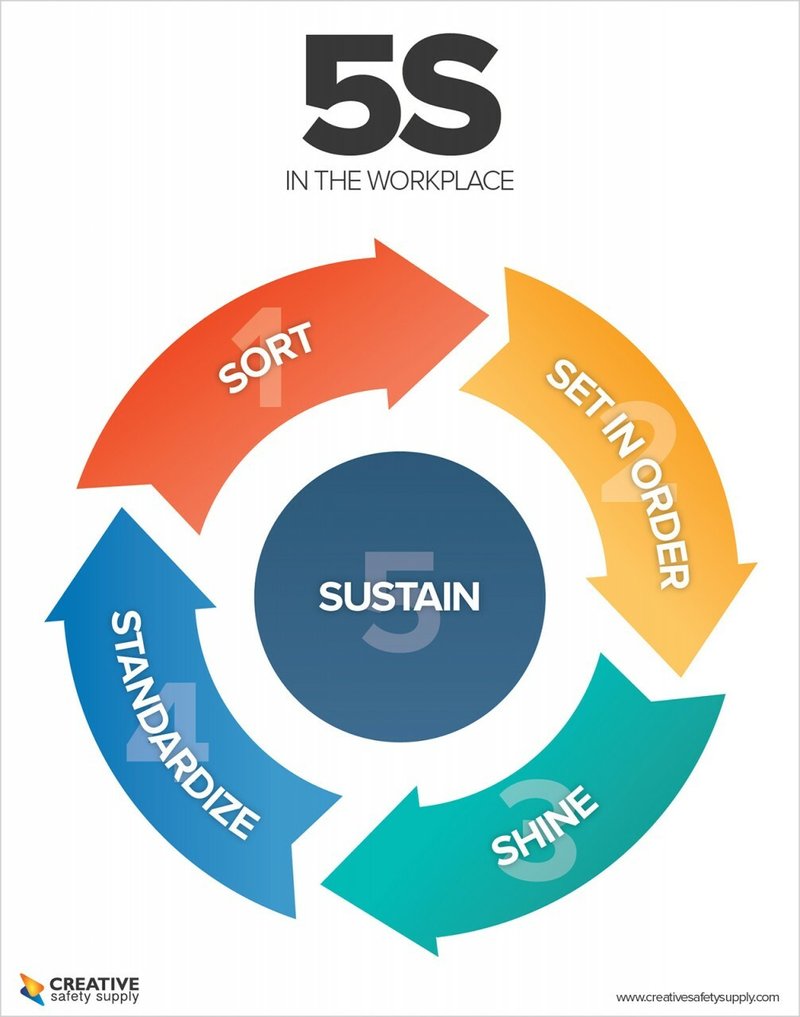What is Lead Time
- Lead time refers to the time quoted to customers (usually in days or weeks) between the date of purchase and the date of delivery.
- It is basically the time frame it takes from the order of a product to its manufacture until it is delivery to the customer.
- This can be days or weeks in duration.
- This includes the production, set-up times, etc.
- Lead time is very dependent on the product itself. Simple, mass-manufactured products can have very short lead times, whereas complex, bespoke products tend to have very long lead times.
The 5S Workplace Model

- The 5S' model is a formal approach to cleaning and organizing the workplace involving five processes.
- Each of the processes start with an S, making them easier to remember.
1 - Sort
- Distinguishing between necessary and unnecessary things, and getting rid of what you do not need.
2 - Stabilize
- The practice of orderly storage so the right item can be picked efficiently (without waste) at the right time, easy to access for everyone.
- A place for everything and everything in its place.
3 - Shine
- Create a clean worksite without garbage, dirt and dust, so problems can be more easily identified (leaks, spills, excess, damage, etc.).
4 - Standardize
- Setting up standards for a neat, clean, workplace.
5 - Sustain
- Implementing behaviors and habits to maintain the established standards over the long term, and making the workplace organization the key to managing the process for success.
- Sustain is in the middle of the flow model, as it is relevant for all four stages.
The 7 Wastes
- Activities identified in an organization that do not add value but cost money.
- The seven wastes are:
Transport
- Unnecessary movements of products or materials.
Inventory
- Excess products and materials not being processed.
Motion
- Unnecessary movements of people, such as walking.
Waiting
- Efforts caused by rework, scrap and incorrect information.
Over Processing
- Unnecessary movements of products and materials.
Overproduction
- More work or higher quality than is required by the customer.
Defects
- Production that is more than needed or before it is needed.
Sources